- Home
- D. H. Lawrence
The Rainbow
The Rainbow Read online
Great Clarendon Street, Oxford OX2 6DP
Oxford University Press is a department of the University of Oxford.
It furthers the University’s objective of excellence in research, scholarship,
and education by publishing worldwide in
Oxford New York
Athens Auckland Bangkok Bogotá Buenos Aires Calcutta
Cape Town Chennai Dar es Salaam Delhi Florence Hong Kong Istanbul
Karachi Kuala Lumpur Madrid Melbourne Mexico City Mumbai
Nairobi Paris São Paulo Singapore Taipei Tokyo Toronto Warsaw
with associated companies in Berlin Ibadan
Oxford is a registered trade mark of Oxford University Press
in the UK and in certain other countries
Published in the United States
by Oxford University Press Inc., New York
Introduction, Note on the Text, Bibliography, Explanatory Notes
© Kate Flint 1997. Chronology © Stephen Gill 1995
The moral rights of the author have been asserted
Database right Oxford University Press (maker)
First published as a World’s Classics paperback 1997
Reissued as an Oxford World’s Classics paperback 1998
All rights reserved. No part of this publication may be reproduced, stored in a retrieval system, or transmitted, in any form or by any means, without the prior permission in writing of Oxford University Press, or as expressly permitted by law, or under terms agreed with the appropriate reprographics rights organizations. Enquiries concerning reproduction outside the scope of the above should be sent to the Rights Department, Oxford University Press, at the address above
You must not circulate this book in any other binding or cover and you must impose this same condition on any acquirer
British Library Cataloguing in Publication Data
Data available
Library of Congress Cataloging in Publication Data
Lawrence, D. H. (David Herbert), 1885–1930.
The rainbow/D. H. Lawrence; edited with an introduction by Kate Flint.
(Oxford world’s classics)
Includes bibliographical references.
1. Family—England—Midlands—Fiction. 2. Midlands (England)—Fiction.
I. Flint, Kate. II. Title. III. Series.
PR6023.A93R3 1997 823′.912—dc20 96–32013
ISBN 0-19-283524-6
3 5 7 9 10 8 6 4
Printed in Great Britain by
Cox & Wyman Ltd.
Reading, Berkshire
OXFORD WORLD’S CLASSICS
For almost 100 years Oxford World’s Classics have brought readers closer to the world’s great literature. Now with over 700 titles—from the 4,000-year-old myths of Mesopotamia to the twentieth century’s greatest novels—the series makes available lesser-known as well as celebrated writing.
The pocket-sized hardbacks of the early years contained introductions by Virginia Woolf, T. S. Eliot, Graham Greene, and other literary figures which enriched the experience of reading. Today the series is recognized for its fine scholarship and reliability in texts that span world literature, drama and poetry, religion, philosophy and politics. Each edition includes perceptive commentary and essential background information to meet the changing needs of readers.
Refer to the Table of Contents to navigate through the material in this Oxford World’s Classics ebook. Use the asterisks (*) throughout the text to access the hyperlinked Explanatory Notes.
OXFORD WORLD’S CLASSICS
D. H. LAWRENCE
The Rainbow
Edited with an Introduction and Notes by
KATE FLINT
OXFORD WORLD’S CLASSICS
THE RAINBOW
DAVID HERBERT LAWRENCE was born on 11 September 1885 at Eastwood, Nottinghamshire, the son of a coal miner. Through high intelligence, determination, and the support first of his mother and later of important literary mentors, he moved away from his origins, gaining a foothold both in the world of the lower middle-class and in the world of artistic London. In 1908 he became a schoolmaster in Croydon, and in 1911 his first novel, The White Peacock, was published. Appearing set for steady progress towards literary and professional respectability, Lawrence decisively halted this trajectory by eloping in 1912 with Frieda Weekley, the wife of one of his former professors, and by publishing three years later an obscene book. Sons and Lovers (1913) and a volume of short stories, The Prussian Officer (1914), had been well received, but The Rainbow was banned on publication in 1915. Lawrence had anticipated that this sexually candid and formally experimental novel would cause a stir, but he was unprepared for the campaign of vilification by certain reviewers. Lawrence’s sense of himself as an outlaw, and his frenzy at the militaristic fervour of the war years, intensified his hatred of most aspects of English life and sharpened the diagnostic probing of his next, and perhaps his greatest, novel, Women in Love (1920). After the end of the war Lawrence travelled restlessly—to Italy, Ceylon, Australia, America, Mexico, and back to France and Italy—and despite steadily worsening health embodied his experience prolifically in diverse genres. But though the settings and plots of much of his later work are exotic, Lawrence was always essentially concerned with what he saw as the death-in-life lived by people in the so-called advanced world, and for his last, and most controversial, novel, Lady Chatterley’s Lover (1928), he returned to the English scene and the coal-mining Midlands which imaginatively still possessed him. Lawrence died of tuberculosis on 2 March 1930.
KATE FLINT is Reader in Victorian and Modern English Literature, and Fellow of Linacre College, Oxford. She is the author of The Woman Reader, 1837–1914 (1993) and has edited and introduced novels by Charles Dickens, Anthony Trollope, and Virginia Woolf for the Oxford World’s Classics series.
CONTENTS
Introduction
Note on the Text
Select Bibliography
A Chronology of D. H. Lawrence
THE RAINBOW
Explanatory Notes
INTRODUCTION
The Rainbow is a bold novel. Tracing the lives of three generations of the Brangwen family, over a timespan that stretches from ‘about’ 1840 to 1905, it explores and enacts the making of pre-First World War England—the emergence, in other words, of the modern. In the novel, social and personal identities are shown to be irrevocably entangled with the environment and opportunities offered by one’s time, yet Lawrence counterpoints his sharp sense of local history, and the forces which shape each individual, with a search for values which are more transcendent of particular time and space. These two aspects of existence, the temporal and the ideal—what Lawrence calls ‘the infinite world, eternal, unchanging, as well as the world of life’ (p. 79)—can never be fully reconciled.
If the principles which govern life itself are never stable, no more so is the incessantly self-divided individual. Famously, Lawrence warned Edward Garnett that he must not look in The Rainbow ‘for the old stable ego—of the character’, with the people in the novel representing components of some old-fashioned moral scheme.1 Rather, he presents his protagonists as destabilized selves, experiencing violent oppositions of feeling, both within themselves and in their relations to others. In particular, he dramatizes two conflicting, irresolvable human drives—on the one hand towards merging with others, and on the other towards independence, towards the establishment of a belief in one’s unique selfhood. ‘The final aim of every living thing, creature, or being is the full achievement of itself’, Lawrence wrote in The Study of Thomas Hardy, composed alongside The Rainbow.2 ‘To be oneself was a supreme, gleaming triumph of infinity’ (p. 439) is the insight that flashes upon Ursula as she peers down a microscope at a tiny
speck of moving life. But both the obligations of narrative, and Lawrence’s fascination with the sparks produced by human contact, show this aim to be more a propellant force than something which can ever find a triumphant, culminating point of achievement. The novel offers many epiphanic moments, yet, in its modernist stress upon flux, these are never allowed to stand for long.
Conflict, as The Rainbow shows, may be experienced in relation to the role one finds oneself playing within the social machine, and thus the nature of this conflict changes along with social expectations and possibilities. But the struggles which matter most for Lawrence take place in what constitutes for him the most intense arena of human interaction: sexual relations. These are struggles which occur in each new partnership, ensuring that a cyclical dynamic structures the novel as well as the slow forwards movement of a family saga. The novel is marked by an attempt to find an expression adequate to describe not just the emotional investment which people make in even the most apparently trivial details of daily life—this is something Lawrence does consummately well, and which shows him, stylistically, as poised between realist and modernist traditions3—but an expression which can encompass those moments of human feeling which appear to go beyond the customary limitations of language. In challenging those limitations, breaking down conventions, and at the same time using insistent repetition to structure both individual paragraphs and the patterns of imagery in the novel as a whole, Lawrence is carrying into the structures of his own prose the fascination with boundaries and with space which characterizes the entire novel. In both enterprise and imagery, he explores what one of his French contemporaries, the poet Paul Éluard, called ‘les géographies solennelles des limites humaines’ (the solemn geographies of human limits’).4
The original boundaries of The Rainbow were themselves uncertain. In mid-March 1913, Lawrence began a manuscript which he called, provisionally, ‘The Sisters’. He was, at the time, living in Italy with Frieda Weekley, with whom he had eloped a year earlier, and work on what eventually became The Rainbow formed part of a peripatetic existence over the next couple of years. From April to June 1913 they were in Germany; from June to August in England, and then back to Germany, where Lawrence made a fresh start on another version of ‘The Sisters’, which he continued in Italy. After sending drafts of the manuscript to his friend Edward Garnett in January 1914, he began another heavily revised and rewritten version, this time entitled The Wedding Ring. By late November 1914, yet another rewriting was taking place, this time separating off the material which would eventually form Women in Love from The Rainbow. Lawrence and Frieda had returned to England in the summer of 1914 and the outbreak of the First World War had meant that they had to remain there. The Rainbow was finished in March 1915 (although Lawrence made further revisions to both typescript and proofs), and was published in Britain on 30 September 1915.
The Rainbow was Lawrence’s fourth novel: The White Peacock had appeared in 1911, The Trespasser in 1912, and Sons and Lovers in 1913. Sons and Lovers had been greeted in broadly enthusiastic terms by many reviewers, who recognized that Lawrence was a talented writer. They praised the closely observed scenes of life in a mining community, and recognized the power with which Lawrence depicted the relationship of his central character, Paul Morel, and his mother. Quite what to make of this relationship, however, not all critics were sure; nor were they entirely comfortable with the anti-heroism of the figure of Paul himself. They located further problems. Some felt that Lawrence paid insufficient attention to form, some complained about his growing habit of verbal repetitions, but more widespread disquiet was voiced at the open treatment of physicality and the representation—as critics saw it—of lust, rather than love. This emphasis had already been a stumbling-block for the publishing firm of Heinemann, to whom Lawrence had first sent the manuscript. They turned it down, and Sons and Lovers was in fact published by Edward Garnett at Duckworth, after several cuts had been made. Lawrence’s open treatment of sexuality caused even more disruption when his next novel was published.
The Rainbow was widely regarded as a transgressive novel. This ensured that its publishing history was not over after its appearance on 30 September 1915: in early November, police confiscated copies of the novel from the publishers, Methuen, and on 13 November the novel was suppressed by court order. Unsold copies were confiscated and burnt. The novel was not just condemned on its appearance because of its open treatment of sexuality—although this formed the core of the objections raised against it in court, where reviews from both the Daily Telegraph (‘utter filth’) and The Times were read out (‘a mass of obscenity of thought, idea, and action throughout, wrapped up in language which he supposed would be regarded in some quarters as an artistic and intellectual effort’).5 What made it particularly controversial was that its presumed obscenity was considered unpatriotic, even damaging to the national spirit, while the country was at war. Moreover, aspects of the novel were rightly perceived to be critical of modern England. Whilst Lawrence’s was hardly a solo contemporary voice in this respect—his contempt for the ‘new red-brick suburbia’ (p. 419) of Willey Green has much in common with E. M. Forster’s condemnation of the rash of building spreading out over southern England in Howards End (1910), for example—what was regarded as offensive, and what was greeted in the emotive tones of moral panic, was the implied critique of nationalism. This especially applied to Ursula’s antagonism towards Skrebensky’s unquestioning militaristic and imperialistic attitudes. Although forcefully expressed, James Douglas was not a lone voice when he wrote in the Star that:
The wind of war is sweeping over our life, and it is demolishing many of the noisome pestilences of peace. A thing like The Rainbow has no right to exist in the wind of war. It is a greater menace to our public health than any of the epidemic diseases which we pay our medical officers to fight inch by inch wheresoever they appear. They destroy the body, but it destroys the soul.6
That Lawrence’s treatment of sexuality should be regarded as shocking, and condemned through the language of disease and degeneration, is hardly surprising, since not only does he dwell on the importance of the physical, but he infuses it with religious vocabulary, thus breaking down the boundaries between the experience of the body and the life of the soul. This spiritual language is appropriated since no other existing vocabulary carried with it the requisite aura of intensity and transportation, yet it is detached from any orthodox framework of theological explanation. The Rainbow is permeated with borrowings from both the Old and the New Testaments, as though Lawrence is counterpointing the social specificity of his characters’ lives with an attempt to see their inner struggles as archetypal. In none of the three major relationships in the book—Tom and Lydia, Anna and Will, Ursula and Anton Skrebensky—are the physical and the spiritual kept as separate domains. When the first couple achieve full emotional as well as sexual consummation, after two years of married life, ‘it was the baptism to another life, it was the complete confirmation … it was the transfiguration, the glorification, the admission’ (pp. 93–4). The fights between Will and Anna not only centre around questions of belief, and whether the structures it offers are enabling or restrictive, but culminate with the language of worship of the infinite and absolute being transferred from religion to the body’s sensual delight. Ursula and Skrebensky may behave sacrilegiously by kissing in a church, but the emphasis for Lawrence falls not on this social transgression, but on the transcendence which is achieved when they first make love, when Ursula ‘passed away as on a dark wind, far, far away, into the pristine darkness of paradise, into the original immortality. She entered the dark fields of immortality’ (p. 449). As the language here shows, the spiritual dimensions of the novel are emphatically not restricted to the bounds of Christianity. Although a formal interest in comparative religion is one of the many sticks Lawrence employs with which to beat the schoolmistress Winifred Inger and her scientific humanism, he himself was drawn by the presence of the mythic, and to attemp
ts across various cultures to find a means of representing a world beyond that which can easily be articulated.
Yet, however compelling the realm of the mystical may be, Lawrence never utterly detaches the spirit from the body: rather, he continually reminds us how tenuous are the boundaries between the human and the animal world. The imagery constantly, even formulaically, reinforces this point. Lydia has a ‘dark muzzle’ (p. 103), and the link with her granddaughter is tacitly drawn when Skrebensky observes Ursula’s ‘golden, puzzled museau’ (p. 465). The young Anna is a ‘polecat’ (p. 86); Will, when he comes courting her, has eyes ‘like a bird’s, like a hawk’s’ (p. 107): increasingly more predatory, he becomes ‘like a grinning young tom-cat’ (p. 112)—a pattern of imagery which tacitly suggests the way in which he himself becomes a victim of his desires. Later, after their marriage, when Anna is pregnant and he watches her dancing, the sight first tortures him with an intensity that can only be compared to religious martyrdom—it is as though he is being burnt at the stake, an image which is re-employed, with a changed emphasis, to show Ursula’s anguish of entrapment when she finds she is pregnant—but the register shifts back to the animalistic as Will takes out his emotional pain through using Anna sexually: she realizes he is like a tiger lying in wait, pulling her down as a leopard will pull down a wild cow. Ursula, their first child, is a little animal, too: a lithe eel, a kitten; and this bestiary extends to the minor characters: her friend Maggie’s brother ominously has the cold eyes of a goat; Ursula’s Uncle Tom, overwhelmed with grief at his father Tom’s death, is compared to a panting dog. She signifies her revulsion from Winifred, whom he marries, and with whom she has had a brief affair, by claiming that her skin ‘reminded her of the great prehistoric lizards’ (p. 349), and Vernon, the boy whom she canes in school, is a ‘beast thing … some beaten rat’ (pp. 397–8).

 Look! We Have Come Through!
Look! We Have Come Through!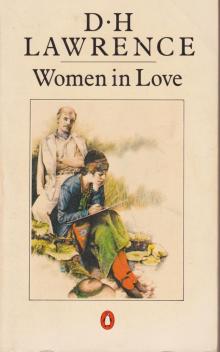 Women in Love
Women in Love The Ladybird
The Ladybird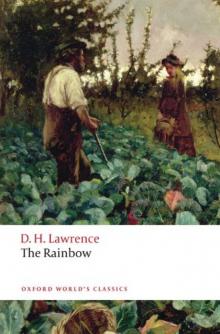 The Rainbow
The Rainbow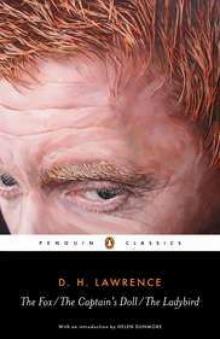 The Captain's Dol
The Captain's Dol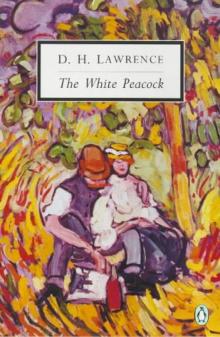 The White Peacock
The White Peacock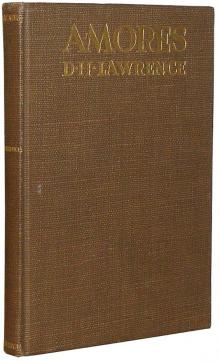 Amores
Amores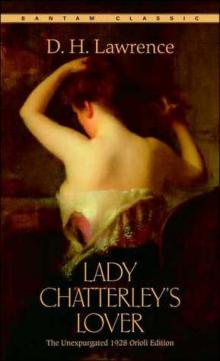 Lady Chatterley's Lover
Lady Chatterley's Lover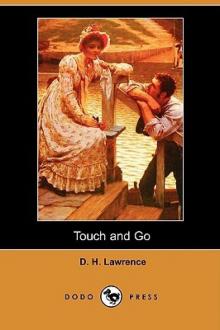 Touch and Go
Touch and Go The Wintry Peacock
The Wintry Peacock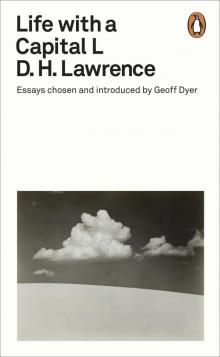 Life with a Capital L
Life with a Capital L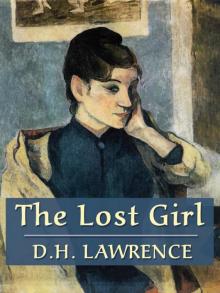 The Lost Girl
The Lost Girl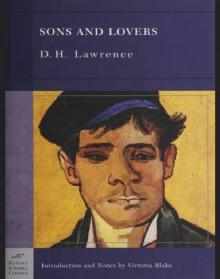 Sons and Lovers
Sons and Lovers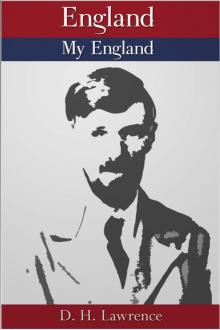 England, My England
England, My England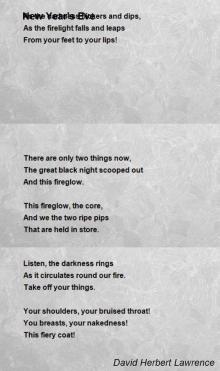 New Poems
New Poems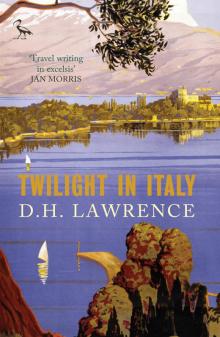 Twilight in Italy
Twilight in Italy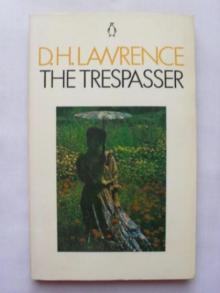 The Trespasser
The Trespasser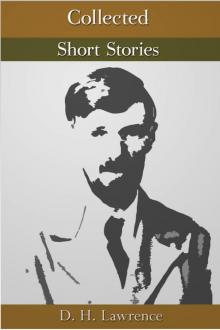 The Collected Short Stories
The Collected Short Stories The First Lady Chatterley's Lover
The First Lady Chatterley's Lover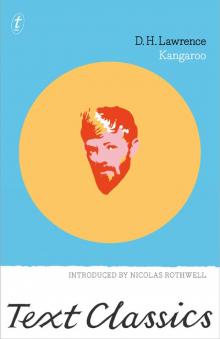 Kangaroo
Kangaroo Bay
Bay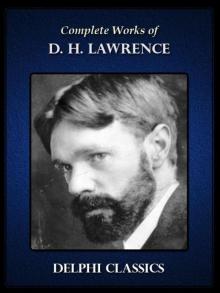 Complete Works of D.H. Lawrence
Complete Works of D.H. Lawrence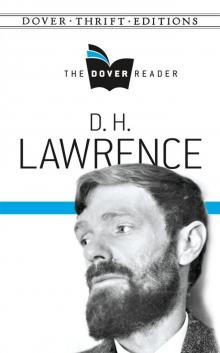 D H Lawrence- The Dover Reader
D H Lawrence- The Dover Reader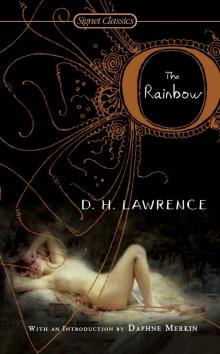 The Rainbow (100th Anniversary ed.)
The Rainbow (100th Anniversary ed.)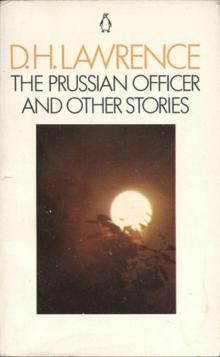 The Prussian Officer
The Prussian Officer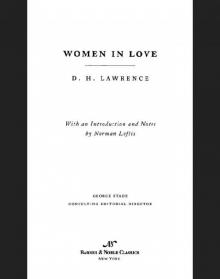 Women in Love (Barnes & Noble Classics Series)
Women in Love (Barnes & Noble Classics Series)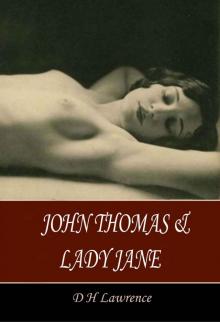 John Thomas and Lady Jane
John Thomas and Lady Jane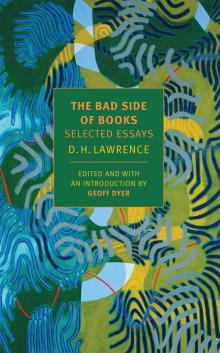 The Bad Side of Books
The Bad Side of Books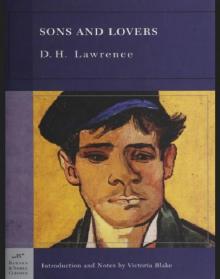 Sons and Lovers (Barnes & Noble Classics Series)
Sons and Lovers (Barnes & Noble Classics Series)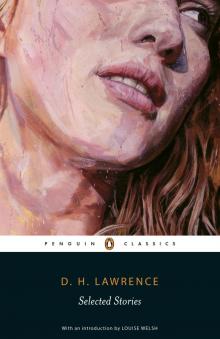 Selected Stories
Selected Stories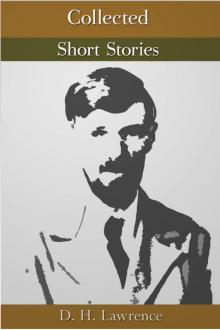 Collected Short Stories
Collected Short Stories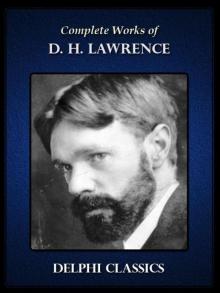 Complete Works of D.H. Lawrence (Illustrated)
Complete Works of D.H. Lawrence (Illustrated)